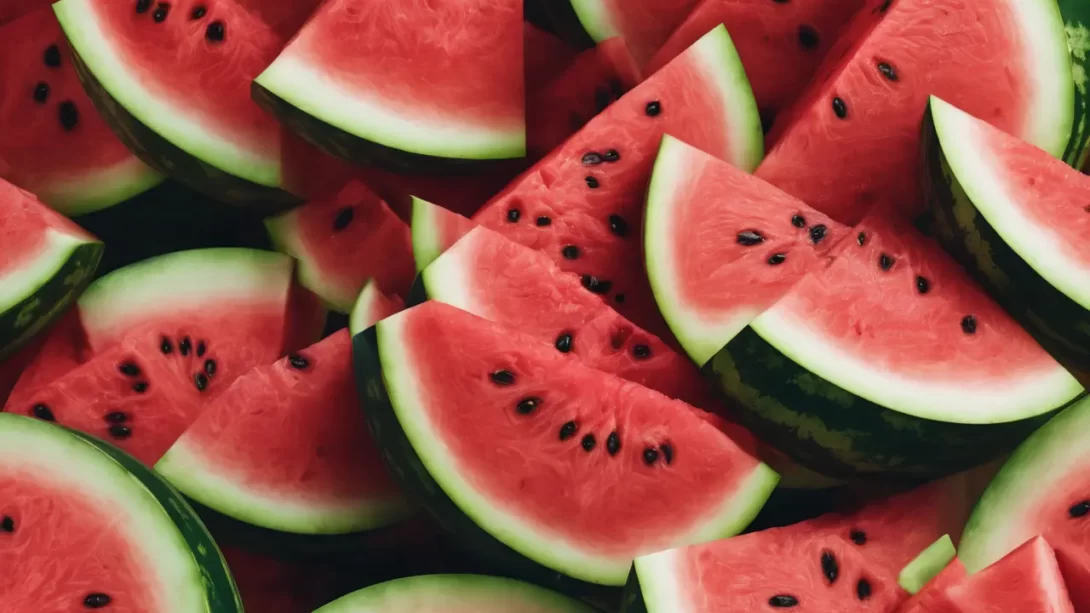Watermelon, a quintessential summer fruit, is often at the center of a colorful debate: is its flesh red or pink? While this question might seem straightforward, the answer is more complex and nuanced than it appears at first glance. This article aims to delve into the factors that influence the color of watermelon, exploring both scientific and perceptual aspects to provide a clearer understanding of this deliciously juicy debate.
Watermelon Varieties
Watermelon (Citrullus lanatus) comes in a myriad of varieties, each with its unique characteristics. The color of watermelon flesh varies significantly across these varieties, ranging from deep, dark red to lighter shades of pink. Classic varieties like Crimson Sweet and Jubilee tend to have a darker red flesh, while others like Sugar Baby can lean towards a pinkish hue. The diversity in watermelon color is a testament to the genetic variation and selective breeding practices that have developed over time.
The Science of Color in Watermelon
The color of watermelon flesh is primarily determined by the presence and concentration of pigments, particularly lycopene. Lycopene is a natural pigment also found in tomatoes and is responsible for the red coloring in these fruits. The intensity of the red or pink hue in watermelon flesh depends on the amount of lycopene it contains. Factors such as the watermelon variety’s genetic makeup and growing conditions (like temperature and sunlight exposure) can significantly affect lycopene levels, thereby influencing the color of the fruit.
Perception of Color
The perception of color is subjective and can vary greatly from person to person. This variation is particularly relevant when distinguishing between colors that are close in the spectrum, like red and pink. Factors such as lighting conditions, individual eyesight, and even the context in which the color is seen can influence how we perceive it. For instance, a slice of watermelon viewed under bright sunlight may appear a different shade compared to when it’s viewed indoors under artificial lighting. This subjectivity makes it challenging to definitively label watermelon flesh as either red or pink.
Culinary and Cultural Perspectives
Different cultures and culinary traditions may perceive and describe the color of watermelon in various ways. In some languages and cultures, the distinction between red and pink may not be as pronounced as it is in others. Furthermore, in the culinary world, the description of food color often leans towards evocative and appealing terms. Chefs and food marketers might choose to describe watermelon as ‘ruby red’ or ‘blush pink’ depending on the context, such as in recipes, restaurant menus, or food advertising. These descriptions not only reflect the physical appearance of the fruit but also contribute to the sensory experience of eating and enjoying watermelon.
Expert Opinions
To gain a more scientific perspective on this topic, insights from horticulturists, chefs, and food scientists can be valuable. These experts might reference specific studies or provide anecdotal evidence based on their experience with different watermelon varieties. Their opinions can shed light on the range of colors found in watermelons and how these shades are typically classified within their fields. This professional input can help bridge the gap between scientific understanding and culinary interpretation of watermelon’s color.
Conclusion
The question of whether watermelon is red or pink is not just a matter of botanical classification, but also one of individual perception and cultural context. Scientifically, the color of watermelon flesh ranges due to varying levels of the pigment lycopene, influenced by genetics and environmental factors. However, the human perception of this color can vary widely, influenced by individual vision, lighting, and context.
In culinary and cultural settings, the description of watermelon’s color takes on an additional dimension, often leaning towards appealing and evocative terminology. What one culture or culinary tradition might describe as ‘deep red,’ another might see as ‘vibrant pink.’ This variation underscores the rich diversity in how we experience and describe the natural world.
Experts in horticulture, culinary arts, and food science acknowledge this spectrum of color in watermelons, often emphasizing the beauty and diversity within this single fruit. While science can explain the mechanisms behind its coloration, the interpretation of that color can differ from one person to another, from one plate to another.
In conclusion, whether you see watermelon as red or pink, this discussion highlights the fascinating interplay between science, perception, and culture in our everyday experiences. It reminds us to appreciate the diversity and beauty in the world of fruits and vegetables, where even a simple question can lead to a deeper understanding of our natural environment and our place within it.



